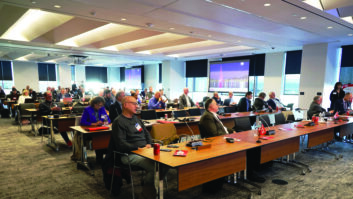The author is membership program director of the National Federation of Community Broadcasters. NFCB commentaries are featured regularly at www.radioworld.com.
Is it that time of year again?
President Donald Trump has introduced his proposed 2021 budget. Once again, the White House proposes eliminating public funding for educational broadcasting, except for two years of funding for wrapping up loose ends of legacy support.
Slashing public broadcasting has been in every White House budget since Trump took office. The president’s full budget will be released in the spring. Then, Congress will then have its say.
[Read: Community Broadcaster: Coming Down on Content]
Each year, lawmakers have spurned the president. It is reasonable to assume amendments will happen again in 2020. Moreover in a presidential election year, when voter energy is especially passionate, it is likely cuts like public broadcasting won’t make it to the final budget. The bottom line is many in Congress are worried about their races. The budget is already a hot potato. Public broadcasting enjoys wide support among everyday Americans. Every incumbent’s record will be excavated by opponents. Savvy politicians are unwilling to give their rivals ammunition.
However, the left-field nature of the budget deserves attention.
Most Americans have heard of public broadcasting through public television and radio. It is doubtful many know how much federal funding goes to such programming. The interest group Protect My Public Media estimates funding represents .01% of federal spending. The grand total? This funding amounts to about $1.40 per American annually.

The White House contends federal funding is no longer necessary. In the budget, the administration zeroes in on the large public media brands in its justification for cuts. “Services such as PBS and NPR, which receive funding from CPB, could make up the shortfall by increasing revenues from corporate sponsors, foundations, and members,” the proposed budget reads. “In addition, alternatives to PBS and NPR programming have grown substantially since CPB was first established in 1967, greatly reducing the need for publicly funded programming options.”
CPB counters these assertions by noting the diversity of public broadcasting.
In a Feb. 10 statement, Patricia Harrison, president and CEO of the Corporation for Public Broadcasting, said, “Through public media initiatives such as American Graduate and Ready To Learn, stations provide high-quality educational content and community engagement that helps Americans prepare for success in school and career. As the most trusted news source in America, local public media stations offer journalism that elevates local stories to a national audience. Further, public media stations’ infrastructure provides critical communications functions during local and national emergencies to first responders and emergency management officials.”
At heart is a need for common ground. If we agree in the importance of funding education, and the value in media as an educational tool, how can we support a system that we agree on?
In addition, one can ask that there is a greater commitment to expanding our nation’s investment in educational media. CPB does so much with its resources, but it is evident that it needs to be able to support many more initiatives. Media is so ubiquitous today. For the next generation, students go to the internet as often as they hit the books. Policymakers must look into expanding educational media funding to ensure the United States stays strong and creates even more opportunities to learn.
It seems highly unlikely many of the decreases Pres. Trump wants for the 2021 fiscal year will pass. Nevertheless, it is important for every station to speak loudly about the educational purpose they serve, and the need for the country to keep educational broadcasting part of its education arsenal.












